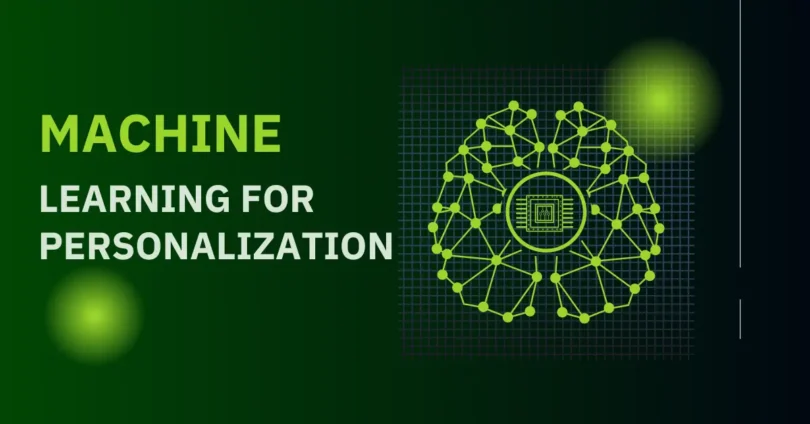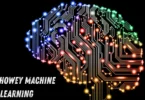Machine Learning for Personalization has become a game-changer. From recommending movies on Netflix to suggesting products on e commerce websites, machine learning helps businesses understand individual preferences and deliver tailored experiences.
By analyzing user behavior, past choices, and interactions, personalized systems can predict what each user is likely to enjoy or need. This not only improves user satisfaction but also boosts engagement, sales, and loyalty.
How Machine Learning Works for Personalization:
Machine learning works by analyzing large sets of user data and making predictions. The process typically follows these steps:
- Data Collection: Gathering information about users such as clicks, views, purchases, and browsing history.
- Data Processing: Cleaning and organizing the data to remove errors and irrelevant information.
- Training Models: Using algorithms to train the system so it can recognize patterns in the data.
- Prediction: Based on patterns, the system predicts what users are likely to enjoy.
- Feedback Loop: As users interact more, the system learns and improves its predictions over time.
There are different types of machine learning used for personalization:
- Supervised Learning: Uses labeled data to predict outcomes. For example, if a user bought a book, the system can suggest similar books.
- Unsupervised Learning: Finds patterns without labeled data. For example, grouping users with similar interests.
- Reinforcement Learning: The system learns through trial and error, improving recommendations over time.
Collecting and Using Data for Personalization:
Data is the backbone of personalization. Without accurate and relevant data, recommendations may fail. Types of data used include:
- Behavioral Data: What users click, watch, or buy.
- Demographic Data: Age, location, gender, and other characteristics.
- Preference Data: Likes, favorites, ratings, and reviews.
- Contextual Data: Time of day, device used, or current activity.
Example: If 100 users liked chocolate cake, the system might recommend it to another user with similar tastes. This process ensures that recommendations are relevant and engaging.
Best Practices:
- Collect only necessary data to respect privacy.
- Use anonymized data where possible.
- Keep the database updated to reflect changing preferences.
Building Personalized Models Step by Step
Creating personalized machine learning models involves several steps:
Step 1: Gather User Data
Collect data from user activities, interactions, and preferences.
Step 2: Clean and Prepare Data
Remove duplicates, handle missing values, and normalize data to make it suitable for algorithms.
Step 3: Select the Right Algorithm
Choose an algorithm depending on the type of recommendation: collaborative, content-based, or hybrid.
Step 4: Train the Model
Feed the prepared data to the algorithm so it can learn patterns and correlations.
Step 5: Test and Validate
Check the models accuracy using test data. Adjust parameters to improve results.
Step 6: Deploy the Model
Integrate the trained model into your app or website for real-time recommendations.
Step 7: Monitor and Update
Regularly evaluate performance and update the model as user behavior changes.
Recommendation Systems: The Heart of Personalization:
Recommendation systems are central to personalization. They analyze user behavior and preferences to suggest items or content.
Types of Recommendation Systems:
- Collaborative Filtering: Suggests items based on similar users’ preferences. Example: “Users who bought X also bought Y.”
- Content-Based Filtering: Recommends items similar to those a user has liked before. Example: Recommending movies of the same genre.
- Hybrid Systems: Combines both collaborative and content-based approaches for better results.
- Example: Amazon and Spotify use hybrid recommendation systems to improve user engagement and sales.
Role of AI in Enhancing Personalization
Artificial Intelligence (AI) enhances personalization by making recommendations smarter and more predictive. AI can analyze complex data patterns, predict user needs, and even suggest items before the user searches for them.
Applications of AI in Personalization:
- E-commerce: Personalized product recommendations.
- Education: Customized learning paths for students.
- Healthcare: Suggesting treatments or health tips based on patient data.
AI acts like a smart assistant that learns your likes and dislikes over time, offering suggestions before you even ask.
Challenges in Personalization Using Machine Learning:
While personalization is powerful, it comes with challenges:
- Data Privacy: Collecting and storing user data must comply with privacy laws.
- Bias in Algorithms: Models may favor certain groups or preferences, leading to unfair recommendations.
- Incomplete Data: Missing or inconsistent data can reduce accuracy.
- Over Personalization: Too much personalization may limit exposure to new content.
Solution Tips:
- Ensure transparency about data collection.
- Regularly audit algorithms for bias.
- Use a mix of personalized and diverse content.
Measuring Success of Personalized Experiences
To know if personalization is working, businesses track various metrics:
- Click Through Rate (CTR): Percentage of users clicking recommended items.
- Conversion Rate: How many users purchase recommended products.
- Engagement: Time spent interacting with personalized content.
- Retention: How often users return to the app or site.
If more users watch recommended videos on a streaming platform, it indicates that personalization is successful.
Best Practices for Effective Machine Learning Personalization
To make personalization effective, follow these guidelines:
- Collect Relevant Data Only: Avoid unnecessary personal information.
- Update Models Regularly: User preferences change, so models must adapt.
- Test Strategies: Experiment with different algorithms to see which works best.
- Respect Privacy: Follow regulations like GDPR or CCPA.
- Balance Personalization and Discovery: Mix familiar recommendations with new suggestions.
Future of Machine Learning in Personalization
The future of personalization is bright and evolving rapidly:
- Real Time Personalization: Immediate recommendations based on live user behavior.
- Hyper Personalization: Deep insights into individual preferences for unique experiences.
- Voice and Visual Personalization: Using voice commands or image recognition to suggest content.
- AI Powered Predictive Personalization: Predicting user needs before they arise.
A shopping app predicting your favorite style or size before you even search for it, making shopping seamless and faster.
Common FAQs About Machine Learning for Personalization
Some faqs of Machine Learning for Personalization:
What is the difference between AI and ML?
AI is the broader concept of machines being smart. ML is a subset that learns from data.
How safe is my data in personalized apps?
Most apps use encryption and anonymized data to protect user privacy.
Can personalization improve user experience?
Yes, it makes apps and websites more engaging and relevant.
How often should models be updated?
Models should be updated regularly as user preferences and behaviors change.
Are recommendation systems always accurate?
No, accuracy depends on the quality and quantity of data.
What types of algorithms are used in personalization?
Collaborative filtering, content-based filtering, and hybrid algorithms.
Can personalization reduce discovery of new content?
Yes, over-personalization can limit exposure to diverse content.
Is personalization only for big companies?
No, small businesses can also use ML for targeted recommendations.
What is hyper-personalization?
It is tailoring content, products, or services deeply to individual user needs.
Can personalization increase sales?
Yes, personalized recommendations lead to higher engagement and more purchases.
Conclusion
Machine Learning for Personalization is transforming the way users interact with digital platforms. By analyzing data, predicting preferences, and delivering tailored experiences, businesses can improve user satisfaction, engagement, and revenue. From recommendation systems to AI-driven predictive personalization, the possibilities are endless.
The key to successful personalization lies in collecting accurate data, using the right algorithms, continuously updating models, and respecting user privacy. As technology evolves, personalization will become smarter, faster, and even more intuitive, making experiences truly unique for every individual.


